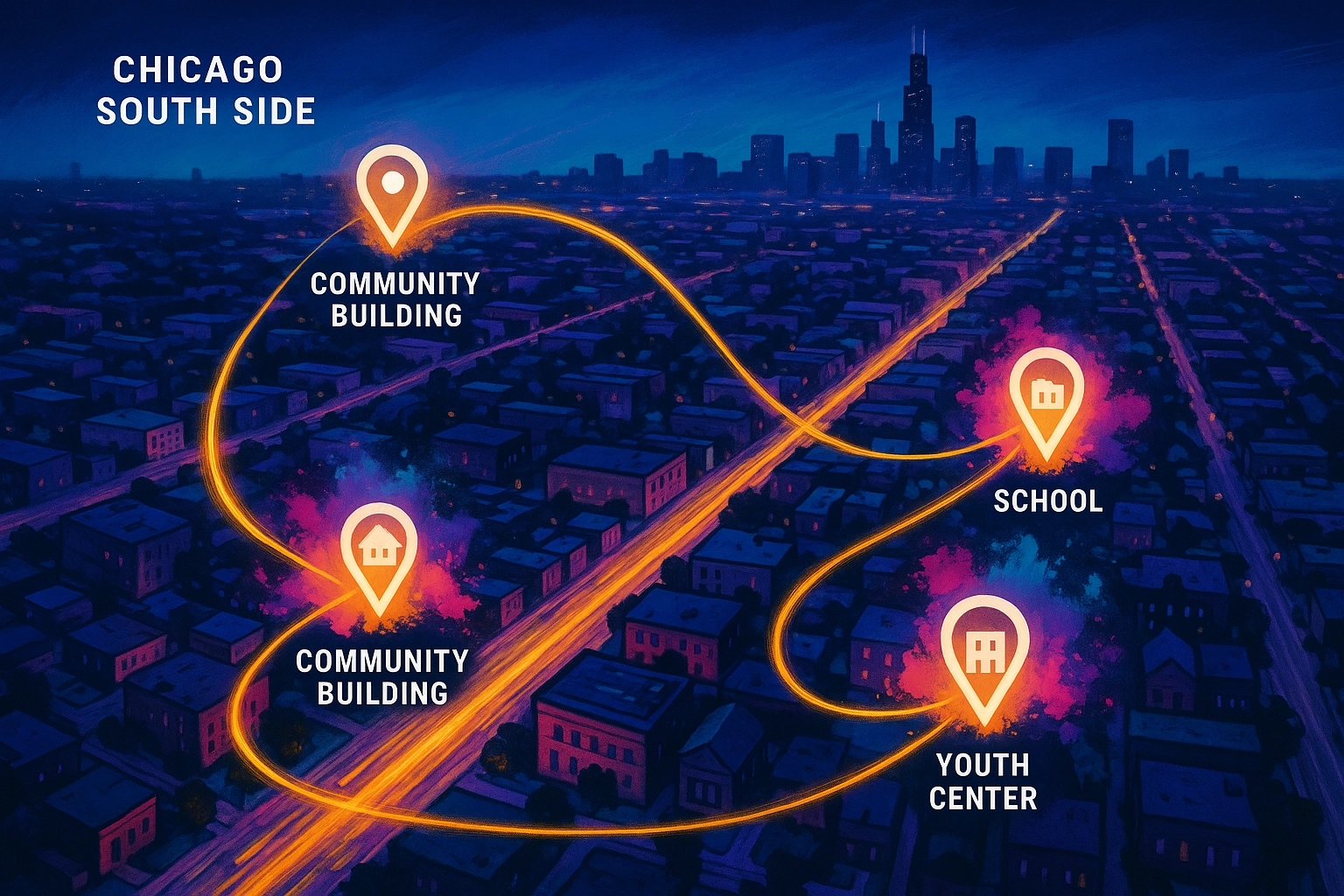5 Steps How to Access Southside Chicago Youth Programs and Transform Your Future (Easy Guide for Families)
- truebelieversoutre
- Sep 17
- 5 min read
If you're a parent or guardian on Chicago's South Side looking to give your child better opportunities, you're not alone. Every day, families just like yours are searching for programs that can help their kids build skills, stay engaged, and create a brighter future.
The good news? Your neighborhood has more youth programs than you might realize. From STEM camps to leadership training, from arts programs to job readiness: there are real opportunities waiting for your child. The challenge isn't finding programs; it's knowing how to access them.
Here's your straightforward, no-nonsense guide to getting your child connected with life-changing programs right here on the South Side.
Step 1: Figure Out What Your Child Actually Needs
Before you start calling random programs, take a step back. What's your child interested in? What challenges are they facing? Are they struggling academically, need somewhere safe to go after school, or maybe they're already doing well but need something to challenge them?

Different kids need different things:
If your child loves technology or science: Look into STEM programs. The Southside STEM Station offers free camps and year-round programs for kids ages 8 through high school. They do hands-on robotics, climate science, and microelectronics: stuff that can actually lead to real careers.
If they're struggling with reading: Literacy programs like Burst Into Books work with kids ages 6-18, combining reading support with fun activities that make learning feel less like work.
If they need physical activity and structure: Programs like Jumping Juniors combine athletics (like double-dutch jump rope) with life skills for at-risk youth ages 8-16.
If they're dealing with trauma or behavioral issues: Many programs include mental health support, conflict resolution, and trauma recovery as part of their services.
Don't try to fix everything at once. Pick the most pressing need first, and remember: one good program often leads to others.
Step 2: Map Out What's Actually Available in Your Area
Now that you know what you're looking for, it's time to see what's available where you live. The South Side has programs scattered across different neighborhoods, and some travel to multiple locations.
Here's what's out there:
Neighborhood-Specific Programs: Many programs focus on specific areas like Greater Grand Crossing, Woodlawn, Harvey, Roseland, Chicago Lawn, Gage Park, Bronzeville, South Shore, and Englewood. Organizations funded by initiatives like Southland RISE are specifically designed to serve these communities.
CHA Properties: If you live in Chicago Housing Authority properties, there are enrichment programs designed specifically for residents in areas where youth have experienced adverse conditions.
Central Locations: Some programs, like the Southside STEM Station at 1520 E. Harper Court in Hyde Park, draw kids from across the South Side.

The key is to start local. Call your alderman's office, check with your child's school counselor, or visit community centers. They usually have lists of programs operating in your specific area.
Step 3: Understand the Real Requirements (Not Just What's on Paper)
Every program has requirements, but don't let the paperwork scare you off. Most are designed to be accessible, but you need to understand what you're signing up for.
Time Commitments Vary Widely:
Summer programs typically run 6 weeks with about 120 total hours
School-year programs might require 300 hours annually (including breaks)
Some programs meet 3+ days per week with weekend activities
Year-round programs can involve up to 360 hours annually
Age Requirements Are Flexible: If your child is close to the age cutoff, call anyway. Many programs make exceptions, especially if the child is mature or the family has specific needs.
"Free" Usually Means Free: When programs say they're free, they typically mean it. Transportation might be provided, meals are often included, and supplies are usually covered. Don't assume you can't afford it.
Documentation Needed: You'll likely need proof of residence, school enrollment, and possibly income verification. Start gathering these documents early: it speeds up the process.
Step 4: Apply Smart, Not Just Fast
Getting your child enrolled isn't just about being first in line. It's about presenting your family's situation clearly and following up appropriately.
Contact Multiple Programs: Don't put all your hopes on one program. Apply to 3-4 that fit your child's needs. Demand is high, and having backup options is smart.
Join Mailing Lists Early: For popular programs like the Southside STEM Station, get on their mailing list well before enrollment opens. They send updates about camps, after-school programs, family events, and competitions.
Be Honest About Your Situation: Program coordinators want to help families who need it most. If your child has specific challenges or your family is dealing with difficult circumstances, share that information. It often helps with placement.

Follow Up Without Being Annoying: If you don't hear back within a week, call once. If it's been two weeks, call again. After that, move on to other options.
Ask About Wait Lists: Even if a program is full, get on the wait list. Kids drop out, especially in longer programs, and you might get a call.
Step 5: Set Your Child (and Yourself) Up for Success
Getting accepted is just the beginning. How you approach the program determines whether your child gets the full benefit.
Prepare Your Child: Talk to them about what to expect. Visit the location beforehand if possible. Explain that this is an opportunity, not a punishment, even if they're initially resistant.
Communicate with Staff: Program coordinators and counselors want your child to succeed, but they need your input. If your child is having problems at home or school, let them know. If they're thriving in the program, share that too.
Explore Additional Services: Many programs offer wraparound services you might not know about: one-on-one mentoring, family engagement activities, employment opportunities for older youth (16-24), and connections to other community resources.
Think Long-Term: The best programs create pathways. A summer STEM camp might lead to an after-school program, which could connect to internship opportunities, which might result in college connections or job placement.

Stay Connected: Even after your child "graduates" from a program, maintain relationships with staff. They often know about other opportunities and can provide references for jobs, college applications, or other programs.
Making It Work for Your Family
The reality is that accessing youth programs takes effort, but it's effort that pays off. According to organizations working on the South Side, programs funded by initiatives like Southland RISE alone are expected to reach up to 8,500 community members, offering everything from arts and sports to trauma recovery and conflict resolution services.
One program coordinator put it this way: "The key is expanding access to quality programming for our southside youth and communities, ensuring that geography and economics don't limit your child's potential."
Your child's zip code doesn't have to determine their future. These programs exist because people in your community fought for them, funded them, and continue to run them. Take advantage of what's available.
Your Next Steps
Don't wait until summer or the start of the school year. Many programs accept applications year-round, and building relationships with program staff takes time.
Start by visiting our programs page to see how True Believers Community Connections can support your family's journey. We understand the challenges South Side families face because we're part of this community too.
The most successful families are the ones who start looking early, apply to multiple programs, and stay engaged throughout the process. Your child's transformation begins with your first phone call or email.
Take that first step today. Your child's future is worth it.



Comments